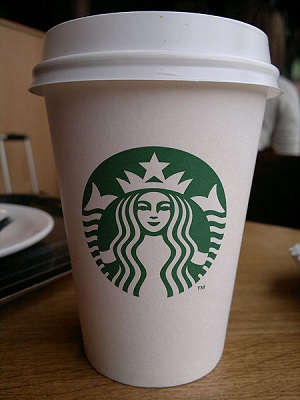Something is different at my local Starbucks. In line for my requisite morning latte the other day, I noticed several regulars already holding the signature green-on-white cup. Perplexed, I asked the barista what was happening. Apparently I’d missed out on the launch of $1 reusable hot cups. The cups were deployed right around the turn of the new year. Available only in Grande (that’s 16 ounces to the unfamiliar), they are intended for approximately 30 uses and are dishwasher safe, top rack only of course.
So why is Starbucks (who commonly sells tumblers over $20) selling these? What inspiration can your business take from it and other companies that have blazed the path? Well it depends on who you ask, but from my perspective it’s both an ethical and marketing endeavor.
Spend It, Make It
Obviously, businesses operate to make money. But, as the old adage goes, you have to spend money to make it. No one knows that better than GoDaddy’s Bob Parsons, the CEO of the world’s largest domain-name registrar. According to his blog, Bob Parsons used the funds from his selling his first business to start Jomax Technologies, which later became Go Daddy. Today, the company manages more than 50 million domain names and employs more than 3,200 people making it the largest company of its kind in the world.
But the idea isn’t just for big-shot tech companies. In any endeavor, large or small, cash-flow management is tremendously important. You can’t go spending all of your capital to get customers on your site or in the door or to support charitable or ethical causes. However, you can make choices to promote the greater good while keeping your business on solid footing.
Take, for example, the TOMS Shoes One-for-One business model. After a trip to Argentina, Blake Mycoskie returned to America to start the campaign that promises consumers that every purchase they make means a free pair of shoes for children in need. Within the first year, TOMS sold 10,000 pairs, according to TOMS.com. In 2010, TOMS gave its one millionth pair of new shoes to a child in need.
Following suit is the genius of this Starbucks initiative. They’re probably not making much money on cups alone, but they’re also not bleeding cash to provide them. The 10-cent-per-beverage discount given to customers for using any personal or reusable cup has been in place for years and will minimally impact their bottom line. Customers using personal containers helps Starbucks use fewer paper cups, which saves on supply costs, delivery costs, trash-hauling costs and the labor to handle those cups (unpack, store, replenish) in the store. For a chain as big as this one, that can mean huge savings over the long haul.
Green Friendly
The secondary benefit is to the environment. The cups, though not intended for long-term use, are recyclable. Starbucks is empowering customers to become part of the solution rather than the problem, hoping to significantly reduce the number of cups, lids and sleeves dumped in landfills from the approximately 4 billion beverages served globally. Starbucks has long touted an interest in environmental stewardship and, as one of the largest and most visible food service providers in the country, can lead other small and large businesses to adopt more earth-friendly practices.
Lastly, it’s a good public-relations tactic. If all things are equal, would you (the consumer) rather spend your money with a company that wants to help people in need and protect the integrity of your environment? Or one that engages in laissez-faire capitalism with no regard for the consequences of their profit-making? Take a look at the beverage cooler by the register next time you go into a Starbucks. You’ll see products like Ethos water and (red) products that divert a portion of the proceeds to a good cause. Like TOMS Shoes, Starbucks knows that they provide a luxury product. No one needs a triple-grande-soy-one-splenda-dry cappuccino to start their day. But they want it and it comes out of disposable income. By giving their customers confidence that they are doing some good, however small, by spending their money there, companies are building their business.
Does your small business have opportunities to do something similar?




